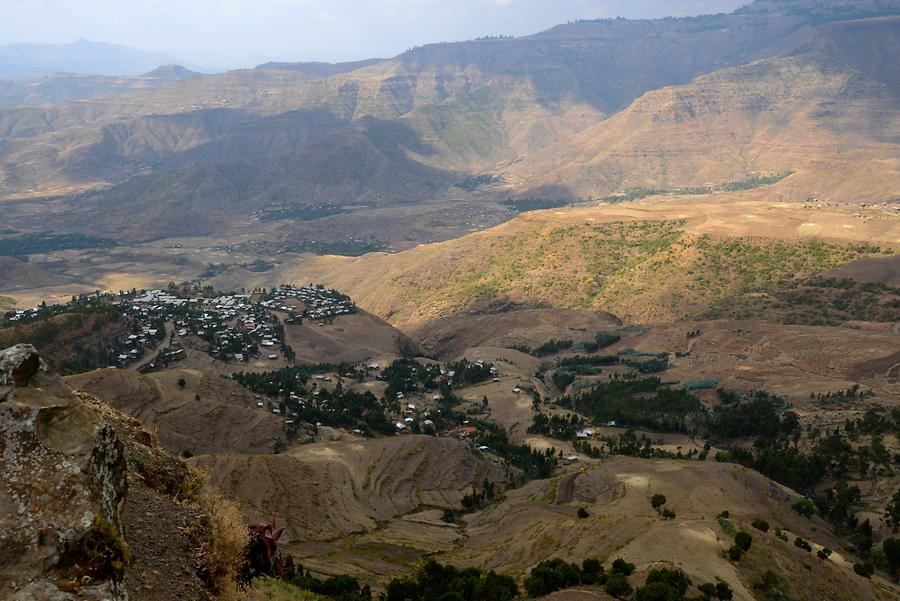Lalibela#

Lalibela, January 2013, © Gerhard Huber, under CC BY-NC 4.0 +Edu
At the beginning of the sixteenth century, the Portuguese Franzisco Alvarez concluded the description of the now UNESCO-protected rock-hewn churches of Lalibela by saying that he did not want to write more about these monuments, for no one would believe him and that therefore he would swear to God that all he had written is true, and that he had even left out some details for fear that he should be accused of fudging.
The place named after the most famous king of the Zagwe Dynasty is located at an altitude of 2500 m in the midst of towering table mountains. In the tenth century, the Zagwe rulers succeeded the Axumite kings. For fear of the comeback of the line of Solomon, they moved their seat of power into the inaccessible mountain world. From there they ruled over a kingdom that stretched from Eritrea to the present capital, Addis Ababa and it flourished under the four-decade reign of King Lalibela. To this day the rush of pilgrims to the city is unbroken.
„Es ist mir genug, weiter über diese Denkmäler zu schreiben, denn es wird mir niemand glauben. Deshalb schwöre ich bei Gott, dass alles, was ich geschrieben habe, die Wahrheit ist, und dass ich sogar einiges ausgelassen habe, aus Furcht, man würde mich der Fälschung bezichtigen.“ So beschrieb der Portugiese Franzisco Alvarez Anfang des 16. Jahrhunderts die nunmehr UNESCO-geschützten Felsenkirchen von Lalibela.
Der nach dem berühmtesten König der Zagwe-Dynastie benannte Ort liegt auf einer Höhe von 2500 m inmitten hoch aufragender Tafelberge. Im 10. Jahrhundert traten die Zagwe-Herrscher die Nachfolge der axumitischen Könige an. Aus Angst vor Rückkehr der salomonischen Linie verlegten sie ihre Residenz in die unzugängliche Bergwelt. Von dort herrschten sie über ein Reich, dass sich von Eritrea bis zur heutigen Hauptstadt Addis Abeba erstreckte. Seine größte Blüte erlebte es unter der vierzigjährigen Herrschaft von König Lalibela. Bis heute ist der Pilgerstrom in die Stadt ungebrochen.